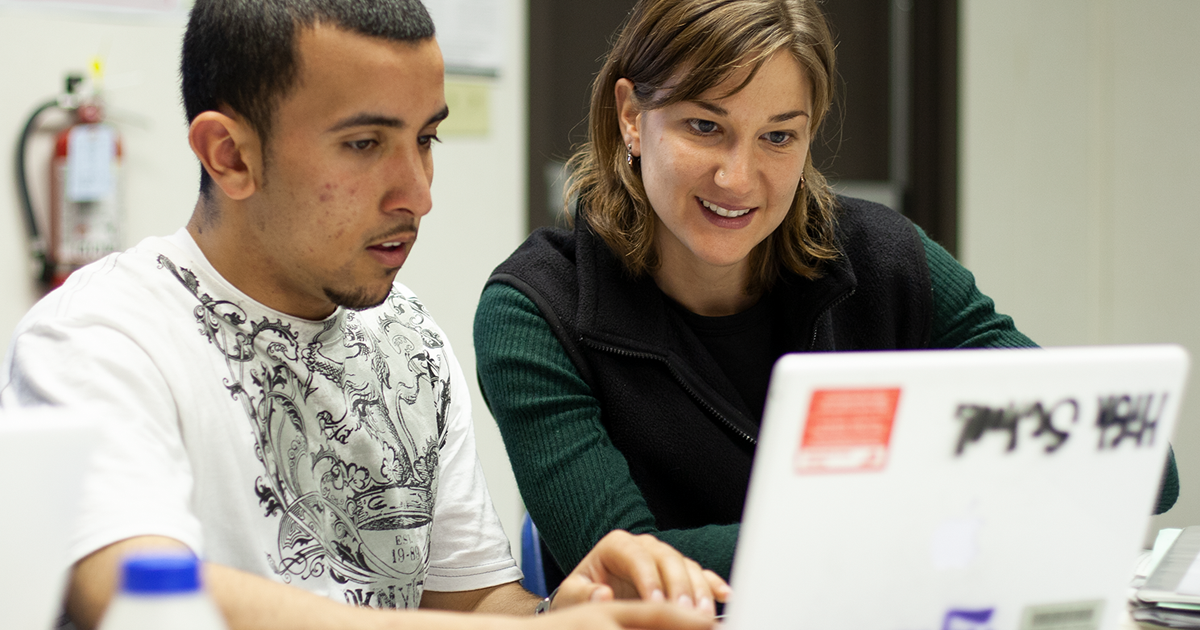Evaluating and Improving Tech Entrepreneurship Education Programs
Posted on by Aleata Hubbard Cheuoua

Written by Aleata Hubbard, Research Associate in WestEd’s Science, Technology, Engineering, & Mathematics (STEM) program.
Tech entrepreneurship education programs are addressing an important need in our society — inspiring youth with the confidence and interest to participate in the tech field. However, figuring out the best way to design these programs can be hard, especially when faced simultaneously with the challenges of hiring staff, developing curricula, building partnerships, and fundraising.
Evaluations can provide useful insights for improving these programs. By gathering data from students, volunteers, and other stakeholders, program directors can learn whether a program is headed toward its desired outcomes and what adjustments will move them closer to their goals.
I first learned about tech entrepreneurship education ten years ago when I moved to Ghana for a job as a teaching fellow at the Meltwater Entrepreneurial School of Technology. For twelve months, I designed and delivered computer science courses to young adults aspiring to be mobile entrepreneurs. It was a difficult year working on a team in the throes of creating a new program, but the experience was worth every challenge. Fast-forward a decade, and former students have launched businesses, started their own tech education programs, and pursued advanced degrees at universities across the globe.
Today as a member of the STEM program at WestEd, I continue to support tech entrepreneurship education by helping organizations evaluate their programs, identify areas of improvement, and make plans to scale their reach. Most recently, I had the opportunity to work with two great programs: All Star Code’s Summer Intensive and Iridescent Learning’s Technovation Challenge. Through these and other experiences, I’ve learned some valuable lessons that I want to share with organizations interested in introducing youth to tech entrepreneurship.
Ensuring Students Complete the Program
- Prioritize collaboration and time management. Programs often center on group projects in which students develop an app together. To pull this off, teams need to agree upon roles, divide their tasks, schedule working sessions, combine their individual contributions, and reach consensus. Some students avoid group work because of prior unpleasant experiences. Others struggle to prioritize the demands of the program and other responsibilities. While students usually acknowledge the benefits of teamwork, they need (a) encouragement to collaborate with others and (b) strategies for developing teamwork skills and managing their time.
- Implement a flexible computer science curriculum. Students enter programs with vastly different levels of computer science knowledge. While all youth can learn computer science, a one-size-fits-all technical curriculum moves too fast for novices and too slow for experienced students. A flexible curriculum that includes additional supports (e.g., links to tutorials, sample code) and optional activities can provide space for both the overwhelmed and underwhelmed students to learn. Also, the computer science curriculum should focus on more than just programming. Students can benefit from an explicit focus on debugging and logical thinking, as these problem-solving skills are needed when working on tech problems.
- Set realistic expectations. Some teams want to create the next Facebook, Yelp, or YouTube. As novice app developers, students don’t have a great idea of the level of effort needed to execute their ideas. This leads some groups to pursue a project they cannot realistically complete within a few weeks. At the same time, interest in these ideas motivates them to persist. To overcome this tension, students need guidance on defining the scope of their projects. Reviewing past student projects and gathering feedback during each stage of the design process can help teams set achievable goals and adjust expectations along the way.
Managing Volunteers
The level of involvement for volunteers in tech entrepreneurship programs can range from one hour of coaching at an evening workshop, to fifty hours spent encouraging teams, to a full-time job delivering lessons and reviewing student work. Whether they are tech professionals, recent college graduates, or secondary educators, there is likely some component of the program that will be new to them. Given the amount of time volunteers already commit, organizations can be creative about the ways they provide volunteers with support in these new areas.
- Weave resources into curricular materials. Some volunteers are new to computer science. They often want additional help around programming to better support their teams. One way to provide additional support is to weave resources into the student curricular materials that volunteers already use. For example, you can provide sample solutions that highlight important aspects of each activity. Or, you might include common student difficulties so volunteers can anticipate student approaches they might need to address.
- Organize peer support groups. Volunteers often learn best from other volunteers who share common experiences. Hosting peer support groups can provide a space for exchanging ideas, getting tips on how to handle particular situations, and receiving support to push through challenging moments. Groups can be organized as weekly staff dinners, team meetings held while students are engaged with a guest speaker, or virtual discussion boards. Whether local or remote, it helps to gather volunteers working under similar contexts.
Building effective and sustainable tech entrepreneurship education programs requires relentless dedication, but the effort does pay off. Investing in evaluation can help organizations identify what’s working well and what needs to be improved so they can better serve their students and volunteers.
Learn more about WestEd’s STEM resources, services, and research.
